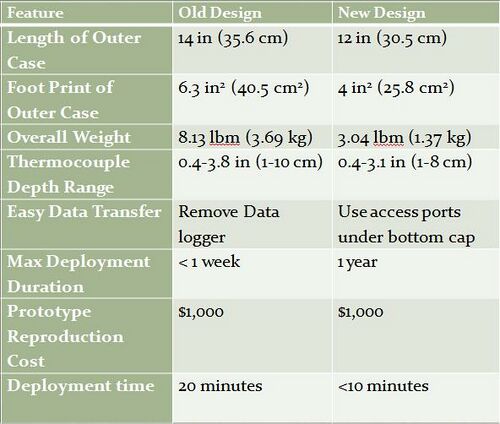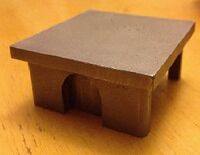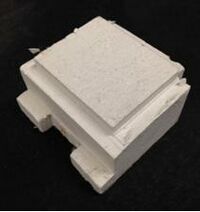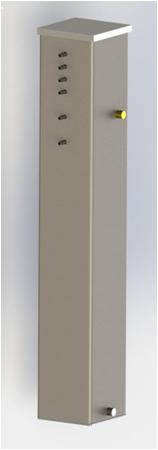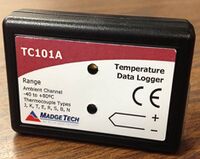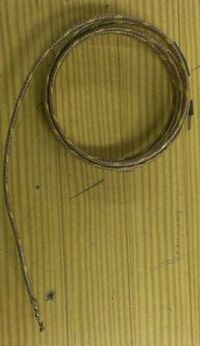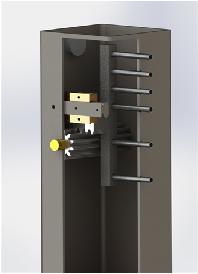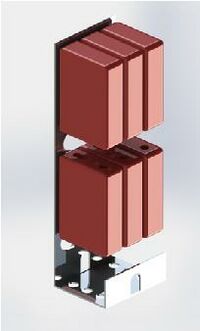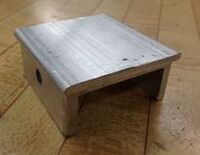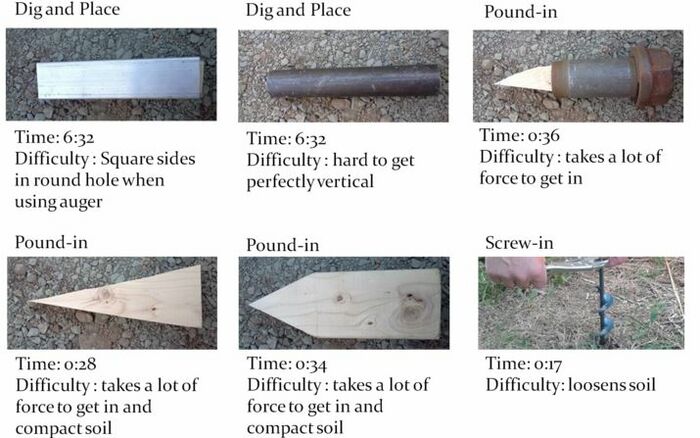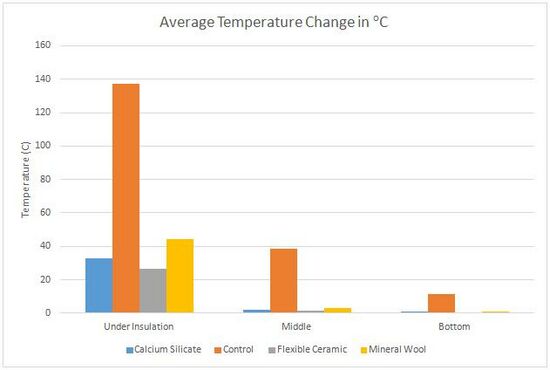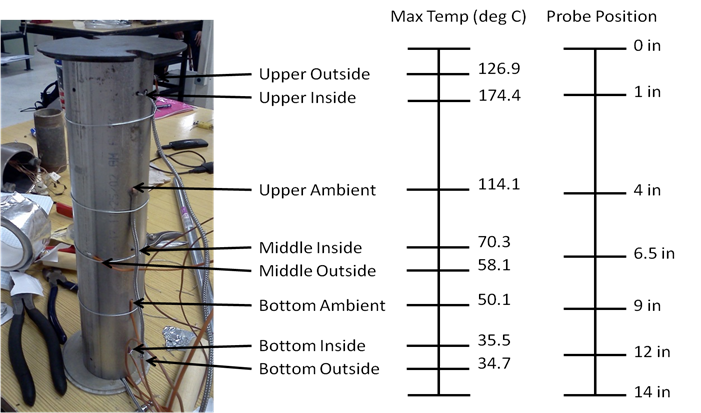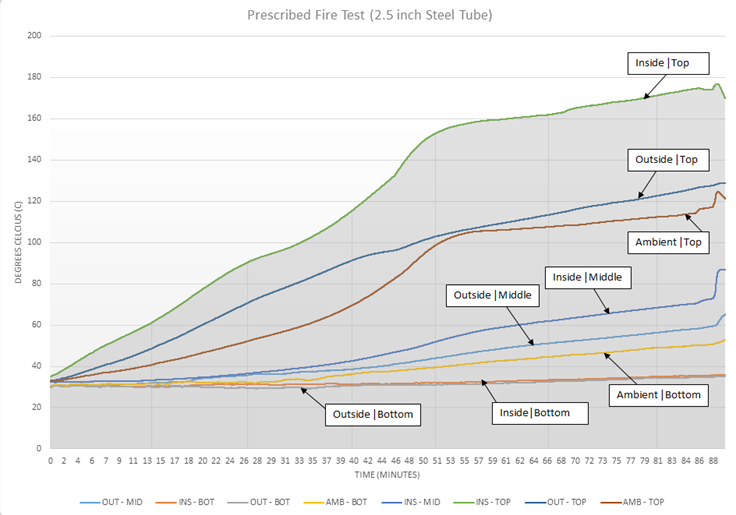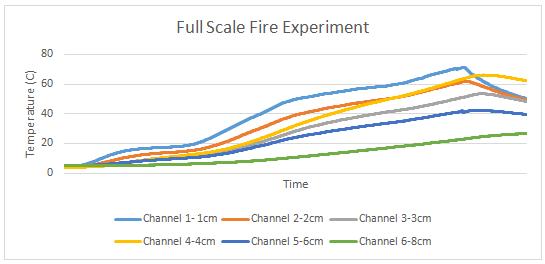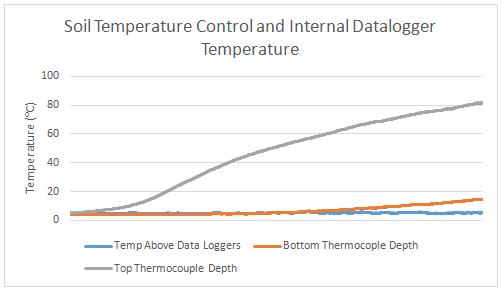Wildfire temperature probe
| Section view of final probe layout (12 inches in length). | |
| Sponsors | USDA Forestry Service. Main contact: Pete Robichaud, probichaud@fs.fed.us |
| Team Name | Team Wildfire |
| Duration | Summer - Fall 2013 |
| Faculty Advisers |
|
| Mentors |
|
This design project's objective is to create the third generation of the Wildfire temperature probe. The probe is buried in the ground before a wildfire passes over, and measures the temperature at different depths in the soil. This information is useful because the carbon released by the fire coats the soil and causes it to be water-repellent.
The driving characteristics for the probe are size and weight due to the fact that multiple units must be carried on site. Also, the size of the probe determines that size of the hole that needs to be dug to deploy the thermocouples.
Team Bio
| Team Member Photo | About |
|---|---|
| Tiffany Donenfeld has recently graduated with her BS in Mechanical Engineering from the University of Idaho. Outside of the class room, she has a wide range of hobbies including swing dancing, knitting, riding motorcycles, and playing in the University of Idaho Marching Band. She is looking forward to fun career in the thermal sciences. | |
| Scotty Hardwick is a senior at the University of Idaho. He will be graduating in December 2013 with his bachelors of Science degree in Mechanical Engineering. Scotty also has a bachelors of Science degree in Biological Science. He hopes to start a career in consumer product design in early 2014. | |
| Pat Moore is a senior in Mechanical Engineering at the University of Idaho who graduates in December of 2013. He is a member of the Sigma Nu fraternity who enjoys watching sports as well as playing soccer and golf. He looks forward to a challenging and rewarding career beginning in 2014. | |
| Joshua Winsel is a recent graduate of the University of Idaho's college of mechanical engineering. In his spare time he enjoys performing music with friends and dabbling in programming. Joshua looks forward to applying his learned technical knowledge and eagerness to learn to tomorrow's problems. |
Design Specifications
Component Decisions
| Device | Description |
|---|---|
*Steel
| |
*Reduces heat transfer
| |
This is a rectangular shape design. This shape would allow more internal room for components that are also square. This design would require digging a hole to install the device.
| |
Data logging devices record data over a period time from varying input sensors. In general, the logged data can be accessed through an accompanying software and PC connection.
| |
| After looking into the different options available, thermocouples are the most appropriate for the temperature probe. Themocouples work at high temperatures and are passive. K type thermocouples operate up to 1260 C (2300 F)and the highest for standard thermocouples. While lower temperatures are expected, the K type was chosen to protect against device failure during a fire. Power is only required to amplify and record the voltage produces due to differing temperatures. This requires only small amounts of power which leads to longer battery life. | |
*Allow for more fluid movement during deployment
| |
*Made of aluminum sheet metal
| |
*Aluminum
|
Prototype Testing
Outer Case Experiment
After running experiments with many different shapes and designs we ended up going with the dig and place method for ground installation. There were faster installation times during our experiments from the pound in wedge shape and the screw shape. However, neither of these designs seemed like they would work well. The screw shapes main issue was turning up the soil around the case which wouldn't work well for the probes going into normally packed untouched soil. The wedge shape’s main issue was isolating the internal components from the force of being pounded in. After pounding in a wooden analogue to the case we realized that we were going to have to hit it too hard to keep from breaking it. Another issue with the wedge was not knowing how it affected the soil around it after it was pounded into the ground.
With the dig and place method chosen for the method of installation we then decided that the round cylinder shape for the outer case was the logical choice. With this choice the user would be able to use an auger or a post-hole digger to make a round hole to easily install the probe. Also, using a round digger with a non-round hole would make probe installation difficult.
Insulation Experiment
This experimental study looked at the effectiveness in reducing heat transfer through a fire probe. Our experiment looked at three different insulation types as well as no insulation. The temperature was taken at three different depths in the case to see how the heat transferred down the device as well. We found that the three insulation types were all statistically equal. The trials with no insulation were significantly higher than with insulation. With the presence of insulation, the temperature was reduced by as much as 110°C. It was also found that the top location was significantly hotter than the lower locations in the case. Other structural characteristics about the insulation types were found through the experimental trials, such as the ability to hold up to heat. With the experimental results, we were able to choose the calcium silicate insulation and be confident that our design could hold up to real world applications of the device.
First Fire Experiment
To understand what temperatures a stainless steel casing would see during a fire, a peace of 2.5" pipe was buried and a small fire built on top. Eight thermocouples were placed to measure the case and internal air temperature at different depths. This information will be useful in preventing the probe's internal components from heating past their operating ranges.
The data shows the the internal surface temperatures are higher then their outside counter parts. If the ground is treated as a heat sink that is the expected result. Also the lower into the ground, the lower the temperature, which is also expected since the heat source is above the ground.
Final Fire Experiment
This experiment is the final test of our working prototype. It was buried under a fire. The fire was allowed to burn for two and a half hours. The fire was put out at the 12:40 mark as can be seen in the graph above. Chanel 4 in an anomaly in that it is much hotter than it should be. This is due to the thermocouple used being of the wrong type and the data from it were wrong. The second graph is from a data logger hooked up to a computer being monitored in real time. This second set-up was used as a safety check. The temperature above the data loggers inside the case was monitored to make sure they did not get too hot. The second set-up was also to make sure the thermocouples were properly insulated from the outer case. With a control in the soil at the same depth as the fire probes, the thermocouples measured the soil temperature. From the results of the test, the probe was accurately measuring the soil temperature and therefore was not being influenced by the case heating up. In addition, the fire probe not only stayed within a safe operating range it barely heated up at all. With the exception of channel 4 from the fire probe, the results from the fire probe were what we expected them to be. The fire probe worked well as a self-sufficient unit just as it should.





